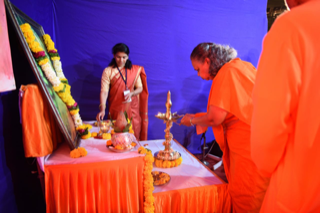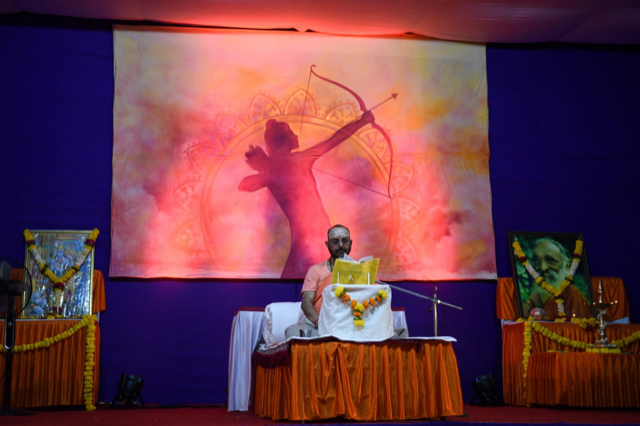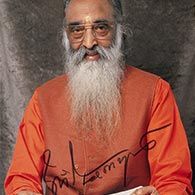Residents of Powai experienced the bliss of Ram Charit Manas (Uttar Kaand - Kakbhushundi Prasang) by Swami Subhodananda. In the verses is the dialogue between Srota - Garuda and Vakta - sage Kakbhushundi. In his journey to unravel the trappings of his mind, moha, Garuda, who is Vishnu’s vahana (vehicle) traverses from Narada to Brahma, then Shankara. Finally, Shankara, who knew it was maya at play, asks him to go to Kakbhushundi’s ashram. Garuda was released from the clutches of ego, doubt and pride by having to go to a mere crow, Kakbhushundi. Once Garuda stepped into Kakbhushundi’s ashram, the vagrant mind ebbed away and it was a clear field for Garuda to soak in the bliss of Ram Charit Manas.
Swamiji spoke about the four yugas and their salient features.
1. Satya Yuga - sattvik tendencies, meditation and dhyana
2. Treta Yuga – blend of rajas and sattva, work-oriented, spirit of yagna
3. Dwapar Yuga - puja, prarthana, worship at the feet of the Lord
4. Kali Yuga – tamas oriented, devoid of yoga, yagna and gnyana, the only saviour is Naama Smaranam.
This by itself is such a powerful tool, as it gives credence to naama as eliminator of all raga-dwesha and becomes a doorway to crossing samsara sagara. To ease the crossing, one should take refuge in the four pillars of Dharma. If one dwells in the outer world and the mind is not tuned to higher goals, then the mind is constantly plagued by moha. Tulsidas sums it up by saying that the only way to overcome moha in Kali Yuga is unflinching devotion to the Lord and steadfastness in faith.
In the mornings, discourses in Hindi on Ganapati Atharva Shirsha was conducted by Swamini Nishchalananda. This is a very popular and important Upanishad because all pujas start with Ganapati puja. This is hence chanted extensively. On the first day, Swaminiji explained the meaning of the name by saying that Sri Ganapati is considered as Supreme Reality, Brahman, not just Gana Nayaka. The first stanza describes the Maha Vaakya, Tatvamasi. There are two types of seekers; who mediate on the unmanifest form; Infinite (nirgun, niraakaar) and others contemplate upon manifest forms. The first stanza describes the former and the rest of stanzas tells about the latter. Beej mantra, Om Gan Ganpataye Namah was explained by Swaminiji, leading to clarity of various terms of Vedanta and helping in chanting and understanding of the text.




